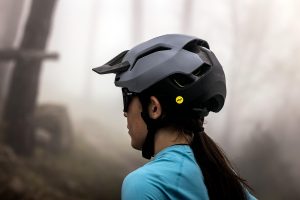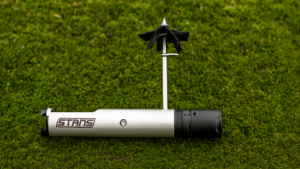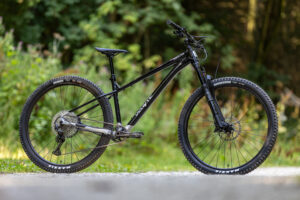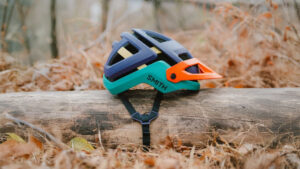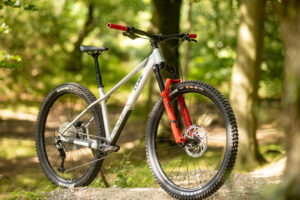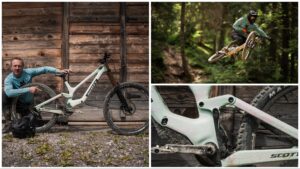Electric mountain bikes (e-bikes) let you go further and faster in the same time as a regular mountain bike, which makes them perfect for the hectic pace of modern life.
This guide will arm you with all the knowledge you need when shopping for the best electric mountain bike. There’s insight on battery and motor technology, a breakdown of different power/weight categories, and all of our recommended models on sale now. Every single one of the bikes in this list has been thoroughly tested by our team of experts, and only the top-scoring bikes make the cut. So, don’t put it off any longer, because with one of the top eMTB models at your disposal, you could be having the best riding experience of your life right now!
On a limited budget? Check out our buyer’s guide to the best cheap electric mountain bikes. And if you want to keep it traditional, there’s our buyer’s guide to the best mountain bike, whatever your budget or discipline.
Best electric mountain bikes – quick list
- Best overall e-bike – Specialized Turbo Levo
- Best budget e-bike under £3k – Decathlon Rockrider E-Expl 520S
- Best lightweight e-bike – Whyte ELyte 150 RSX

Specialized has been building e-bikes for longer than most, and its Turbo Levo is proof that experience counts.
1. Specialized Turbo Levo Comp Carbon
The best shop-bought electric mountain bike
Frame: FACT 11m Carbon, 150mm travel | Motor: Specialized/Brose 2.2 90Nm, 565W peak power | Battery: Specialized 700Wh | Weight: 22.43kg | Rating: 9/10
Reasons to buy:
- Excellent chassis
- Versatile
- A blast to ride
- Great value at the discounted price
Reasons to avoid:
- Cost-cutting drivetrain and fork
In a hotly contested shoot-out, the Specialized Turbo Levo emerged as our best Shop-Bought E-Bike of 2023. There are loads of reasons why it won – a smooth silent motor, comprehensive size range, aggressive, adaptable frame geometry, fun handling, neat integration, and a battery that’s easy to remove – but the real clincher for the Turbo Levo is that it it’s just such a blast to ride.
Yes, Specialized has cut a few corners with the components, but most are consumables that can be upgraded when they wear out. And out-of-the-box it managed to be the easiest bike to throw around, which meant you could either bank that energy and ride for longer, or release it with maximum abandon on the descents. It’s a package that’s hard to fault.
Read the full review of the Specialized Turbo Levo Comp Carbon

The Canyon Spectral:ON impressed us with its dynamic handling.
2. Canyon Spectral:ON CF 9
The best direct sales electric mountain bike
Frame: Carbon, 155mm travel | Motor: Shimano STEPS EP8 85Nm, 500W peak power | Battery: Canyon 720Wh | Weight: 23.34kg | Rating: 9/10
Reasons to buy:
- Dynamic handling
- Choose either 720Wh or 900Wh battery
Reasons to avoid:
- Brakes lack bite
- Maxxis Assegai EXO casing tyres aren’t tough enough
- Tall head tube
In the direct-sales category of our E-Bike of the Year test 2023 it was the Canyon Spectral:ON CF 9 that walked away with the top prize. And considering it’s a bike that was unashamedly inspired by the Specialized Turbo Levo – from the battery access to the geometry – that should come as no surprise.
The handling is sublime. As agile as a motorised gazelle, with a front end that can be played with like putty in your hands, the mullet-wheel Spectral:ON dispels the opinion that e-bikes are inert. And even with the optional 900Wh battery fitted, Canyon seems to have defied the laws of physics with a dynamic ride that puts most other e-bikes to shame.
Read the full review of the Canyon Spectral:ON CF 9

The Polygon Siskiu T7E has the ride quality to compete with much more expensive models, despite some teething problems.
3. Polygon Siskiu T7E
Best budget e-bike
Frame: ALX Enduro alloy, 144mm travel | Motor: Shimano EP801 600W, 85Nm | Battery: Shimano 630Wh | Weight: 24.62kg | Rating: 9/10
Reasons to buy:
- Great handling and geometry
- Shimano EP801 motor + 630Wh battery
- Fully adjustable suspension
- Shimano SLX gears + wide-range cassette
- Flip-chip for MX wheel option
Reasons to avoid:
- The battery fell out, three times
- Hard compound tyres limit grip
- Suntour rear shock blew after two rides
- Geometry slacker than claimed (actually that’s a positive!)
With the demise of Vitus, Polygon has stepped up to claim the best budget e-bike throne from the E-Mythique LT. This bargain e-bike is built burly, with low, slack geometry normally found on bikes with way more than the Siskiu T7E’s 144mm of travel. It gets a genuine Shimano EP801 motor and 630Wh internal battery – well, we say internal, but it fell out a few times on our test bike. But once we’d correctly positioned the battery mounts – an error in assembly – and the battery remained secure and we were back to absolutely tearing the knobs off the Schwalbe tyres on the toughest trails at BikePark Wales. With capable and highly adjustable suspension, dialled brakes, sweet gears, and a host of well-chosen components, this really is a stone-cold electric bargain.
Read our full test review of the Polygon Siskiu T7E

The Pivot Shuttle SL blends the best of analogue bikes and e-bikes into an intoxicating experience.
4. Pivot Shuttle SL 29 Team XTR
The best lightweight electric mountain bike
Frame: Carbon Hollow Core, 132mm travel | Motor: Fazua Ride 60 60Nm/450W | Battery: Fazua Energy 430Wh | Weight: 18.47kg | Rating: 9/10
Reasons to buy:
- Very dynamic handling
- Low resistance, high power Fazua motor feels great on or off
- Integrated 430Wh battery boosts range
- Shimano XTR drivetrain and brakes reduces weight without compromising performance
- Sag indicator is really useful
Reasons to avoid:
- EXO casing tyres are too thin for a bike this capable
- Can’t remove the battery for charging
- Slight delay in the motor when reengaging after overrun is complete
- Handlebar mounted controller feels fragile
Pivot was one of the first brands to release a lightweight trail bike with the latest Fazua Ride 60 motor, and it set the bar very high. So high we awarded it our 2023 E-Bike of the Year award in the Lightweight category. Key to winning that accolade is the infectious ride quality, that encourages skilled riders to extract the maximum fun from every trail. There’s no slack in the system – with minimal travel you have to be on your best game – but the Shuttle SL amplifies every ride.
Fazua’s Ride 60 system feels punchy in the top Rocket mode, but still delivers the best range of all the lightweight motors we tested. Over 1,000m of climbing in Rocket. So the lack of a range extender isn’t really a problem, even though it’ll be tough turning down one more run when the red light starts blinking.
Read the full review for the Pivot Shuttle SL 29 Team XTR

The YT Decoy’s extra battery capacity creates a subtle belly, but keeps the weight low and centred.
5. YT Decoy
Most dynamic long-travel e-bike
Frame: Carbon, 165mm travel | Motor: Shimano STEPS EP8 85Nm, 500W peak power | Battery: SMP YT 720Wh | Weight: 23.32kg | Rating: 8/10
Reasons to buy:
- Big travel and dynamic handling
- Top spec for the money
- Finally the staying power to match the thrills
Reasons to avoid:
- Very limited bottle capacity
The YT Decoy has been around for a while now, but it still rides as superbly as it did when we first tested it over three years ago. There’s a stack of travel, but it manages to fly in the face of that depth, with a dexterity and reactivity that turns every trail into a playground. And being direct-sales means the Decoy is exceptionally well-dressed for the money.
Our main complaint with the Decoy was the small battery, but YT has now fixed that with a larger capacity unit that comes as standard. So now you don’t have to limp home for an early bath while all your mates go for an extra lap.
Read our full test review of the YT Decoy

The Canyon Strive:ON was our e-enduro test winner.
6. Canyon Strive:ON
Best electric enduro race bike
Frame: Carbon, 160mm travel | Motor: Bosch Performance CX, 85Nm, 600W peak power | Battery: Bosch 625Wh or 750Wh | Weight: 23.6kg | Rating: 10/10
Reasons to buy:
- A blistering race bike that’s just as capable outside the tape
- Great value
- Well considered spec
- Progressive sizing
Reasons to avoid:
- Limited pedal/BB clearance
- Needs careful sag set-up
- Battery needs careful installation
- Boring paint job
Canyon’s Strive was built to win e-bike enduro races at the highest level. And it has done just that, taking the E-EDR championship title in 2023. Key to its success is the punchy and responsive Bosch CX motor, the ample 160mm of travel, the MX wheel design, and the easily removable battery. But while it excels against the clock, it also delights when fun is the only key performance indicator, with agile, dynamic handling and progressive sizing that lets you use every mm of your body’s range of motion.
Choose the lighter 630Wh battery, or the big 750Wh unit for maximum range. But whichever you choose, you’ll have a blast on the Canyon Strive:ON.
Read our full review of the Canyon Strive:ON CFR

7. Specialized S-Works Turbo Levo SL
Lightest mid-power e-bike
Frame: Fact 11m carbon, carbon shock extension, 150mm travel | Motor: Specialized SL 1.2, 50Nm, 320W peak power | Battery: Specialized SL 320Wh | Weight: 17.65kg | Rating: N/A
Reasons to buy:
- More sizes and more adjustability,
- More power and more torque than before
- Lightweight
Reasons to avoid:
- Rear suspension isn’t as plush as before
- It’s a ton of money
Specialized has brought the original lightweight Turbo Levo SL up to date and then some. This second generation version gets more power and torque, better sizing and geometry, and some of the most impressive built-in adjustability on the market. Which means you can play tinker with the handling by playing with the head angle, BB height and chainstay length, or sling in a bigger back wheel (it’s sold standard in an MX configuration) if you want better rollover.
Adding power and torque has helped on the climbs, but range has taken a hit. Thankfully there’s also a range extender available to ensure you don’t get left by the trailside with empty tanks. And while most ‘lightweight’ e-bikes seem to stretch that description on the scales, the Turbo Levo SL actually deserves its SL moniker with a weight that’s not far off some analogue bikes with similar travel.
Read our test review of the Specialized S-Works Turbo Levo SL

The Orbea Wild M-Team is a superb e-enduro bike.
8. Orbea Wild
Best customisable e-bike
Frame: Carbon or alloy, 160mm travel | Motor: Bosch Performance CX, 85Nm, 600W peak power | Battery: Bosch 625Wh or 750Wh | Weight: 23.72kg | Rating: 9/10
Reasons to buy:
- Rock solid on rough tracks
- Excellent balance on size large
- Ample power and range
- Suspension offers both grip and support with the option to increase progression
- Customisable spec
Reasons to avoid:
- Battery is not easily removable.
- Not as agile as Strive:ON
- Reduced rear wheel clearance for smaller riders
- Headset-routed cables
Orbea’s Wild is a seriously good looking e-bike, and with 160mm of travel, and a progressive frame, it’s an absolute weapon on hardcore enduro terrain. Open up the taps on a jagged rock garden and the Wild never flinches, yet the balanced geometry also lets you carve corners like an Olympic skier.
A customisable spec lets you build your perfect bike – right down to the chance to choose custom colours – which is not something many brands offer. A blistering e-bike that loves to hang it out on the roughest of tracks.
Read our test review of the Orbea Wild M-Team

The Whyte ELyte RSX is our SL E-Bike of the Year thanks to its excellent suspension and agile handling.
9. Whyte E-Lyte 150 RSX
Best SL e-bike
Frame: Carbon, 140mm travel | Motor: Bosch Performance SX, 55Nm, 600W peak power | Battery: Bosch 400Wh | Weight: 19.92kg | Rating: 9/10
Reasons to buy:
- Balanced handling and suspension
- Low centre of gravity, even with range extender
- Great build for the price
- Flip chip geometry adjustment
Reasons to avoid:
- Maxxis Dissector rear tyres lacks bite
- Only four frame sizes
- Range extender not included
- Bosch SX motor rattles when coasting
It’s taken three months of testing, but Whyte’s ELyte 150 RSX has just emerged as the winner of our SL E-Bike of the Year award. Against a stacked field that included the Santa Cruz Heckler SL, Cannondale Moterra SL, and Orbea Rise LT, the Whyte edged into pole position with a ride quality we judged to be pretty darn close to perfect. All thanks to “great handling, perfect proportions and sublime suspension”, along with a frame design that lets you add a range extender without compromising the performance.
The only thing better is the newly updated Whyte ELyte Evo, which takes the same chassis and suspension and adds the latest rattle-free Bosch CX motor for more grunt and an even smarter response.
Read our test review of the Whyte E-Lyte 150 RSX

Looks good, rides even better, and doesn’t cost the earth – the Decathlon Rockrider E-Expl 520S.
10. Decathlon Rockrider E-Expl 520 S
Best budget e-bike under £3,000
Wheel size: 29in | Frame: Alloy, 140mm travel | Frame sizes: S, M, L, XL | Motor: Brose T 70Nm/460W | Battery: Brose 500Wh | Weight: 25.86kg | Rating: 8/10
Reasons to buy:
- Smooth running, extremely quiet Brose motor
- 500Wh removable battery and impressive range
- Fast and capable handling
- Dropper post fitted as standard
- Space for a bottle cage
Reasons to avoid:
- Brakes could be more powerful
- Tyres are fast but lack grip when wet
- Not as powerful as other affordable e-bikes
- Takes forever to charge
It’s easy to turn a nose up at Decathlon’s cycling kit, but the French sports superstore chain is making big improvements to its MTB range, and the latest Rockrider E-Expl 520 S is proof of that. For just £3k we were astounded by the ride quality delivered when we tested it. Starting with the frame, it’s a quality aluminium chassis with up-to-date sizing and geometry, and sorted suspension with an air fork and shock, to make tuning easy. The dropper post lets you get the saddle out of the way for descending, and the Brose motor is smooth and silent, delivering enough power for even steep climbs. When we weren’t grinning ear-to-ear, we were shaking our heads at the performance for the price. Even more staggering is the fact that there’s also a cheaper version with a detuned motor, less travel, and no dropper post for under £2.5k.
Click here for our full review of the Decathlon Rockrider E-Expl 520 S

The latest Whyte ELyte 150 EVO blends light weight with full power.
Also worth considering
We’ve been testing e-bikes since 2014, and in that time we’ve built up a huge databank of testing experience on which we draw on whenever we get a new e-bike in to review. And we get a lot of them! Some of the standout models that we’ve ridden and not rated, or haven’t quite made it onto this buyer’s guide list, are here, as many of them are well worth consideration in their own right.

The Amflow PL Carbon Pro will outpace pretty much any other e-bike on the market – it’s a rocketship!
To kick things of there’s the Amflow PL Carbon Pro with DJI Avinox motor. A bike that has caused a massive stir in the e-bike market with its outrageous power combined with impressive weight. I’ve only had a short time on one, and there’s a long term test bike on the way, so the full review will follow in time. But first impressions are important, and I stepped off the Amflow incredibly impressed with the relentless power of the DJI motor, the sophistication of the controls and integrated display, and the agile handling of the Amflow chassis. For a first bike the fledgling brand has done a good job – the sizing is decent, the suspension is active and encourages a dynamic riding style. But the frame is not built as solidly as something like a Specialized Turbo Levo or Trek Rail, so it’s at odds with the punchy motor. And if you’re used to that kind of rock-solid sensation, you might find the Amflow a bit on the flimsy side.
Next is the Privateer E161, a bike that we’ve not fully tested, but we’ve ridden extensively. It’s a heavy beast, even if it rides lighter on the trail than it does on the scales, appropriate given the robust nature of Privateer’s conventional enduro bike. The Shimano EP801 motor is a great unit, improved recently with Shimano’s firmware update that improves response, support, and overrun. But there’s still a Shimano 630Wh internal battery that doesn’t deliver the range we’d expect given the cell count. I’m including it here because it’s a hard-hitting e-bike at a fantastic price – currently just £3,999 – and there’s even a 60 day ride and return period, in case you don’t like it.

The Privateer E161 is built tough.
Another porky e-bike with a surprisingly spritely ride quality is the confusingly-named Merida eOne-Sixty 875 Lite. Lite refers to Merida’s in-house alloy tubing, used on this model, but at over 26kg, it’s anything but. Still, Merida has masked this mass with some beautifully tuned suspension that tracks the ground perfectly and pops like a shaken up bottle of cream soda. There’s tons of travel – 174mm – MX wheels for snappy turn-in, and a good range of size options. It’s decent value too, with the option to run up to 1,100Wh of battery thanks to a 360Wh range extender.
At the other end of the weight scale is the svelte Lapierre E-Zesty. This takes a different approach to the two bikes mentioned so far by using a lightweight, mid power motor and smaller battery to shed the kilos. As a result, the Lapierre tips the scales at 19.2kg for a 150mm/140mm travel bike. The frame is also carbon, which help, even if it uses 29in wheels front and rear (which adds weight). There’s a compromise in terms of outright power – the Fazua Ride 60 motor only puts out 60Nm torque and up to 450W peak power compared to the typical 85Nm and 600W of a full power system – but the Fazua system is surprisingly punchy, impressively quiet, and seriously efficient. In range tests we’ve got 1,200m of climbing out of the 430Wh battery using the full power Rocket mode. My biggest concern is reliability – we’ve had several Fazua units fail, including the one in the Lapierre. And this is echoed by dealers. Fazua is working hard on quality and warranty, so hopefully it can solve these concerns.

If you want to taste the future of enduro riding, the Mondraker Dune XR could be it.
There have been a slew of e-bikes released this year with the lightweight Bosch SX motor, and one of the ones I’ve really enjoyed riding is the Mondraker Dune XR. This is a big travel enduro bike with 165mm at the rear and 180mm up front. But the weight is under 20kg, even with decent tyres and a coil shock, and the MX wheels mean it ducks and weaves like a racing drone. I loved the feeling of riding a pure analogue enduro bike, with the ability to get back up to the top of the hill in half the time. It’s not perfect though – the seat tube insertion is poor, so it’s impossible to run a longer dropper post fully slammed, and the headset-routed cables will be a pain to work on.
Canyon also launched a bike with the Bosch SX motor, called the Neuron:ONFly. Not exactly a name that trips off the tongue, but the bike is one of the best value Bosch SX models on sale, at just over £4.6k for the entry-level model. It’s pretty short travel though, and the suspension and tyres are tuned for range and efficiency rather than blasting fast, technical singletrack.

The stealthiest e-bike on the planet? The Canyon Spectral:ONFly.
Another Canyon offering that’s fresh for 2024/25 is the Spectral:ONFly. This looks a whole lot better than it sounds, in fact it’s a stunning looking e-bike, that would pass under most rider’s radar as a conventional trail bike thanks to its slender down tube, tiny TQ motor, and silent running. All of the MBR team that have ridden it came back frothing, saying it rides brilliantly too. Just like an analogue bike. Problem is, the 360Wh internal battery meant they never got very far before the lights went out.
On the budget e-bikes front Alan also tested the Yamaha Moro 07 and Giant Stance E+1 recently, and rated both of them a solid 8/10. The Giant stood out for its solid build, and supple rear suspension, but the hard compound tyres, heavy weight, and noisy motor detracted from the silky ride. Yamaha’s first electric mountain bike is a unique prospect that stands out from the crowd. We liked the smooth ride and superb specification for the money, but the smaller 500Wh battery and 27.5in wheels with fat 2.9in tyres are a bit outdated. Yamaha has been offering some killer deals on the Moro 07, which makes it easy to gloss over the criticisms.

YT’s Decoy SN likes to be ridden uncaged.
Another e-enduro bike in a similar vein to the Mondraker Dune is the YT Decoy SN. This gets the same motor found in the Lapierre E-Zesty, with all the positives and negatives that brings, stuffed into a super-solid carbon frame with 170mm/160mm of travel. It’s not the lightest mid-power e-bike at just under 21kg, but it’s supremely playful in the bike park, and fast and confidence-inspiring on enduro trails. Look out for a full review soon.

The latest Santa Cruz Vala gets the full power Bosch Performance CX motor with lighter 600Wh battery.
Santa Cruz has just launched perhaps its most controversial bike yet, the Vala, that abandons the brand’s signature VPP suspension for a four-bar linkage with Horst link. It’s also the first Santa Cruz to get a Bosch motor – the new CX – along with a 600Wh internal battery, MX wheels and 160/150mm travel. It looks like the recipe for a lot of fun. Rich Owen has been out to California to ride it and came back impressed, but we’ll be getting a bike for further testing soon. So stay tuned for a full review.

Have your cake and eat it – the Cannondale Moterra SL 1 blends light weight with full power and long range.
In our recent bumper SL E-Bike of the Year test we brought together 8 of the latest models. This was a massive undertaking that took three months of solid testing, including weighing and measuring all the bikes, and range testing all the motors, with the same tyres, pressures, rider and trails. While the Whyte ELyte 150 RSX narrowly took the overall win, many other models impressed us. Bikes like the Cannondale Moterra SL 1, which cleverly blends full power and superb range with light weight and dynamic handling. Only issues with the brakes, and suspension performance that didn’t quite hit the spot, kept it from a rating higher than 8/10.

The Orbea Rise LT M10 is another full power SL e-bike.
We also loved the Orbea Rise LT‘s dialled geometry, configurable frame, with two battery options and a range extender, and the full power Shimano motor, but we were frustrated by the over-damped fork and mismatched suspension balance. It was also quite a flexy bike, which means it won’t suit heavier, hard-charging riders.

Orange Phase Evo LE gets an all-alloy frame and is built for enduro riding.
Orange’s Phase Evo LE had no suspension problems, and we loved the balance between the frame feel and the suspension performance – this was a bike we could really push on proper enduro terrain. But there are a few elements of the frame design and component choice that we struggled with, leaving it with a 7/10 rating.

Specialized still leads the way on weight with the Turbo Levo SL.
Another 7/10 bike was the Specialized Turbo Levo SL Expert Carbon, which tipped the scales at just 18.48kg making it the lightest bike on test. Even adding the 160Wh range extender kept it under the weight of its rivals, with a bigger battery capacity than most. We also loved the integration of the display and the controls, and the next-level adjustability on offer. If only Specialized could increase the power and add a bigger battery the Levo SL would still be right at the top of the game.
Trek’s super-stealthy Fuel EXe 9.7 could pass for a conventional bike thanks to its sleek looks and quiet motor, but it’s underpowered and overpriced (before discounts) with a porr value spec next to rival options.

Norco was close to getting a top mark with the Fluid VLT C2.
Finally there’s Norco’s Fluid VLT C2, another bike with the Bosch SX motor. There’s lots to like here, with a frame, geo, and suspension that are geared up for shredding. However, Norco has hamstrung the Fluid with underpowered brakes and hard compound tyres that flounder in tricky conditions.

Unlike any other e-bike – the Cotic Rocket.
It’s not only SL e-bikes we’ve been riding recently. We’ve also tested Cotic’s controversial new Rocket e-bike, with its steel frame and external battery. Despite the ungainly aesthetics and eye-watering price tag, Guy was smitten by the Cotic’s ride quality being “more flexible and forgiving” than the “body-battering frames” of a typical e-bike. This is a divisive bike, certainly, but one that may well find an audience that’s not catered for currently.
Mick’s also tested the new Merida eOne-Eighty, a bike he highly rated with a 9/10, despite its 27kg heft. Partly thanks to Bosch’s new benchmark CX motor with next-level response, but also Merida’s “silky” suspension tuning and deft disguising of that mass.

Mondraker’s new Crafty Carbon RR makes mincemeat of any climb.
Another Bosch CX-equipped model we’ve tested recently is the Mondraker Crafty. This is a comprehensive makeover for the Spanish brand’s best-selling e-bike, with a new carbon frame with revised suspension layout, adjustable geometry, and mullet wheels. Danny reckons it’s one of the best climbing e-bikes he’s ridden; “extraordinary” was his verdict.
Jamie’s been riding the not-so-lightweight Marin Rift Zone EL, which at 21.08kg is one of the heaviest ‘SL’ e-bikes he’s ridden. It felt capable and composed on chunky terrain, but lacked the motor punch or dynamic handling needed to distinguish itself from a full-power e-bike at slower speeds. Still, the price is good, and the spec is keen, with impressive suspension.
Which electric mountain bike is right for you?
As e-bikes are making up an increasing market share of new bike sales, so they are starting to diversify in order to meet varying consumer demands. At one end of the scale are the bike park bombers, with massive travel, coil-sprung suspension and even dual-crown forks. Also emerging slowly are the lightweight, ‘diet’ e-bikes with less power and smaller batteries. While in the middle are the all-purpose ‘trail’ e-bikes with air suspension, versatile geometry and around 150mm of travel.
A new breed of eMTBs has started emerging as of 2023, and that’s ones with a similar motor output, but with a lighter weight by using a smaller or more efficient battery.
Want to know the different parts of an eMTB? Check out our guide to the anatomy of an e-bike.

The Forestal Cyon Halo is a lightweight e-bike with packed with impressive tech.
What is a lightweight/diet e-bike?
With most e-bikes weighing between 22-25kg, small weight differences between different models are barely perceptible. Suspension performance, sizing, component choice and geometry play a far greater role in defining the handling of an e-bike.
That was until Lapierre brought out the eZesty weighing an impressive 17.9kg, and e-bikes took a huge leap closer to their non-assisted cousins. The Lapierre uses a Fazua motor, with reduced power, torque and battery capacity, so you have to do a larger share of the work, but it takes much less effort to turn, jump, accelerate and decelerate. Because you put more energy in, the range is similar to full-power e-bikes with double the battery capacity, and with no extra friction in the system, it still responds to pedal efforts above the motor’s legal cut-off of 25kph. You can even remove the whole battery and motor to make a 15.6kg enduro bike.
Since then, Specialized has released the Turbo Levo SL and Kenevo SL, newcomer Forestal the innovative Siryon and Cyon, Trek has launched the Fuel EXe, Pivot came out with the Shuttle SL, and Orbea has the Rise. There are also options from Scott (the Lumen), Transition (the Relay) and BMC. If you like the thought of a boost on the climbs, but want to retain the lively handling and pure response of a regular bike, a diet e-bike could be the best of both worlds.

The Canyon Torque:ON is so moto it even comes with a gas tank (for water!)
Can you get downhill-specific e-bikes?
Haibike was probably the first mainstream brand to start designing long travel e-bikes and equipping them with dual crown forks, but the spotlight really swivelled onto this category of bike with the introduction of the Specialized Kenevo. With coil-sprung suspension, heavy-duty tyres, four-piston brakes and masses of travel, it was part shuttle vehicle, part downhill bike.
More recently, Cannondale has joined the party with the Moterra SE, while Specialized has pushed the boat out even further with the outlandish new Kenevo, and more recently we’ve seen the Canyon Torque:ON (above).

The Specialized Turbo Levo is a hoot to throw around.
Are trail-focussed e-bikes the most versatile?
Most full-suspension e-bikes fit the ‘trail’ category and typically they run around 150mm of travel, but fitted with burlier forks up front, compared to their analogue cousins, to cope with the extra weight and leverage of the frame.
Four-piston brakes are common, again to decelerate the additional mass, and they usually have slacker head angles and slightly smaller sizing – the extra weight adding stability that non-assisted bikes make up for in length.
Although there are models with 29in wheels and 27.5in wheels, you’ll see plenty of bikes mixing the two into what’s called a mullet configuration. The 29in wheel up front giving good rollover while the smaller 27.5in wheel at the back increasing agility. Usually this is paired with a large volume 2.6in or 2.8in rear tyre that stretches the footprint and increases traction on steep or loose climbs. The most popular motors are built by Bosch, Brose and Shimano, with most battery capacities ranging from 500Wh to 700Wh.

Power-assisted hardtails are simpler, but struggle on rough terrain.
Are e-hardtails a good choice for mountain biking?
If you’re riding consists solely of tow paths, fire roads and country tracks, then e-hardtails make a lot of sense, since they can be cheaper and there’s less to go wrong. But for hitting proper singletrack, bike parks and trail centres, we wouldn’t recommend one.
The reasons are simple. You remain seated far more on an e-bike than an analogue bike – mostly because the motor prefers a high cadence, and the up-down piston motion of your legs when standing up doesn’t mesh well with the smooth, consistent power delivery of the motor. So without any rear suspension you’re in for a punishing ride on anything but billiard-table smooth trails.
E-bikes let you ride up climbs you wouldn’t dream of on a regular bike, but if you can’t get traction – because the rear wheel is bouncing over bumps and roots – you’ll be off and pushing. Finally, on fast, rough or technical descents, it’s much harder to get an e-bike off the ground, so rear suspension not only helps reduce the impact at the wheel, it also helps you pop the bike over square-edge hits. Which is why most e-hardtails we’ve seen on technical trails are being pushed – with a flat back tyre.

Cleaning an electric mountain bike is fine, as long as you take care and leave the jetwash in the garage.
Everything you need to know about electric mountain bikes
Got a question about riding, setting up or caring for your e-bike? Check out the essential info below, and you’ll also want to take a look at our answers to the most popular eMTB questions.
Are e-bikes worth it?
Do you want to ride much further and climb much faster in the same amount of time as you can on a regular bike, then the answer is absolutely YES! E-bikes allow you to cram in two or three times as much climbing (and descending) into a typical two hour ride as you can on an analogue bike, and with everyone juggling busier lives than ever, that’s an attractive prospect.
Of course there’s no such thing as a free ride, and in the case of e-bikes you’ll have to consider the high initial price, the extra wear and tear on components and the additional weight of the bikes themselves before deciding whether they are right for you. If you’re an experienced rider, it will take some time to adapt your riding style to that extra weight, but after the initial adjustment period, you’ll be addicted to the extra runs you can get in.
And, while it’s possible to let the engine take the strain, you can still get a great workout by toning down the power or not stopping for a breather at the top of every climb. And if you’re just starting out, those intimidating climbs will no longer be such an obstacle to exploring the countryside.

Bosch PowerTube battery can be charged on or off the bike
How long do e-bike batteries last?
Although there are plenty of online range finder tools, there are so many variables in play that they can only ever be considered a rough guide.
The best way of finding out how far your new e-bike will go on a single charge is experience. Record your rides and make a note of the trail conditions, power levels used and the battery remaining, so you can cross reference it against the distance covered and elevation gained. Once you’ve built up a data bank of rides, you’ll have a much better idea of your range when you go somewhere new.
To give you an idea of what to expect in the real world, for a rider weighing 70-75kg with dry trail conditions, we get around 1,800m of climbing from a 600-700Wh battery in a middle power setting. Why metres climbed instead of distance traveled? Well, the motor puts a much higher drain on the battery when climbing, and theoretically the battery would last forever if you rode along the flat above the speed limiter.
Should I charge my e-bike outdoors?
In a perfect world, you should always charge your e-bike’s battery indoors at room temperature (between 10-20°C, out of direct sunlight). If your battery is not removable, try your best to charge the whole bike in the house. Always only use the recommended charger that came supplied with the bike and don’t leave it charging unattended or overnight.
Why does my motor still turn when I stop pedaling?
Some motors, most notably the Brose, continue to give assistance briefly when you stop pedalling. Usually this is most obvious in full-power mode, and can be useful to get up stepped climbs, rock gardens or over patches of roots where you need to coast in order to prevent pedal strikes. Officially under EU law this assistance cannot last for more than 2m, although we’ve experienced considerably more than that in the real world.
The new Bosch CX Race motor gives a noticebly powerful overrun, which is designed to help racers up the technical ascents that are a feature of e-enduro racing.

Battery display built in the to top tube on the Turbo Levo.
What’s the lifespan of my battery?
This varies by manufacturer. Giant says you should have 80 per cent capacity left after 1,000 full charge cycles (equivalent to a big ride almost every day for three years). Shimano guarantees 60 per cent battery capacity after 1,000 full charge cycles. Specialized promises 60 per cent after 500 full cycles. Bosch says between 60-70% after 500 charge cycles.
What frame size should I go for?
Because all that low-down weight means e-bikes are so much more stable than their naturally-aspirated counterparts, it’s less important to search for stability through frame length and slack geometry. That’s not to say you should get the smallest bike you can, but if you’re between sizes, it’s worth considering the smaller option. As always, the best course of action is to try before you buy, so find out about demo days and shop fleets before you commit.
Is it OK to wash my e-bike?
According to advice from Bosch, you should wash your e-bike as frequently as you’d wash an analogue bike (ideally after every ride), but you should never use a jet wash. This is because the high-pressure water can get past seals and into delicate electronics, as well as into non-serviceable areas such as the bottom bracket.
Equally, avoid degreasers and bike shampoos – use water from a garden hose, or bucket, and a range of brushes to get into those awkward areas around the chainset and the motor. Advice varies around what to do with the battery – Specialized recommends leaving it in-situ, but Bosch suggests removing it, then replacing the battery cover. Either way, we’d remove any displays (or cover with a plastic bag), dry the bike immediately after washing, particularly battery terminals, and then switch the bike on to check everything’s working.

E-bike climbing skills with the trials master: Chris Akrigg.
Where should I store my battery?
Keep your battery stored between 10-20°C and out of direct sunlight. If that’s not possible, consider getting a thermal blanket – basically an insulated sleeve – to store it in. If you drive to go riding, keep the battery in this sleeve en route, as it will maintain a more optimal temperature. If you’re not planning on riding for a while, remove the battery from the bike, and store in the house with around 60 per cent charge (the exact amount varies between brands). Charge fully before use.
Do I need e-bike specific components?
As e-bikes have become more popular, so brands have reacted quickly to develop specific products to fit them. In some cases they’re a waste of time, in others they’re well worth considering if not fitted as standard to your e-bike.
For example, Fox’s e-bike specific 36 forks use a thicker steerer tube and stanchion tubes to better resist the increased loads. SRAM’s Guide RE e-bike brakes use a simple lever with four-piston calipers for additional braking power.
Canyon’s SD:ON saddle has a flat nose and broad, kicked-up tail to give you something to push against on steep climbs. Also think about reinforced casing tyres, bigger brake rotors, stronger wheels, more robust freehub internals. Look for components that offer the best value and durability rather than weight saving or bling factor, as e-bikes tend to chew through consumables much faster than analogue bikes.
What happens if my motor stops working out of warranty?
Good news! Now you’re no longer left with a hefty bill for a new motor, because several businesses have popped up specialising in refurbishing, repairing, and servicing motors from all the top brands. Click here to read our story about where to get your e-bike motor fixed.
Looking for something a little less pricy? You can still get a brilliant budget electric mountain bike for less money that still offers amazing performance.








